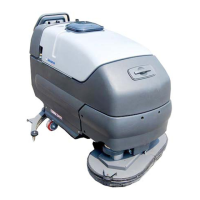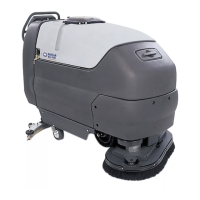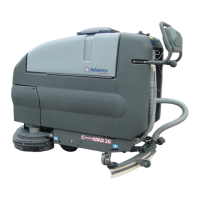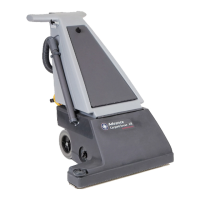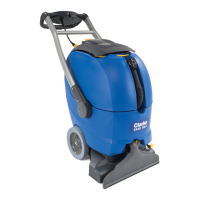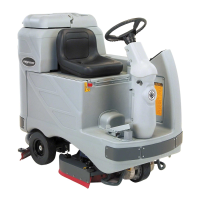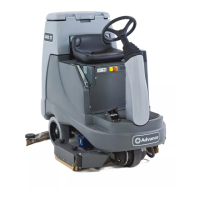Control System 52Service Manual – CS7000
Troubleshooting
There are two important things you need to know about electrical diagnosis on the CS7000 machine. First,
it is capable of setting fault codes that can help narrow down the possible causes. Second, there is a special
“Service Mode” built into the machine that will help you diagnose electrical problems quickly. See the “Fault
Codes” and “Service Mode” sections below for more information.
Fault Codes
The main machine controller monitors every circuit it controls for overloads (excessive current draw). If it
sees an overload it will set and display a fault code and shut the circuit down. For instance, if the side broom
contactor coil becomes shorted and draws too much current, it will set and display a code 19 and shut down
the side broom contactor control circuit. This means the side broom motors will not work and there will be
a code 19 displayed. You should check the fault code table below to nd out what “19” means. When you
see that it means “Side Broom Contactor (K8) Winding Circuit Overload “ that will help you narrow down the
possible causes that you need to diagnose. Once the problem is corrected the fault code will no longer be
displayed. However, it will remain in the fault code history.
Not all electrical problems will be accompanied by a fault code. The main machine controller does not set
faults for open circuits or “not enough current draw”. For instance, if the side broom motor contactor coil
becomes open and draws no current, there will NOT be a code set for this condition. The side brooms will
not work because of the open contactor coil but there will be no fault code. The main machine controller does
not monitor every electrical circuit. For instance, it monitors the control side of the side broom contactor
coil because it completes the circuit for the winding. It does not monitor the “contact” or “load” side of the
contactor.
Any fault codes detected by the main machine controller will be displayed on the LCD display as they occur.
Critical faults are displayed like this code 50:
If more than one critical fault exists, the display will sequence through the active warnings and cautions at
one-second intervals.
Non-critical faults are displayed like this code 19:
If more than one non-critical fault exists, the display will sequence through the fault codes and the hour
meter at one-second intervals.
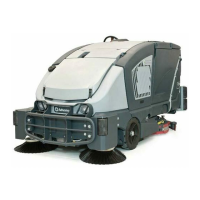
